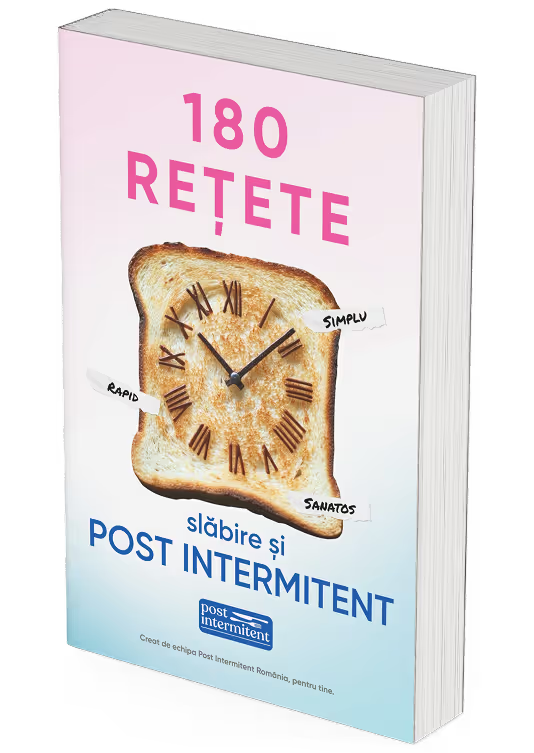In this article you will discover the most popular intermittent fasting protocols, what each one entails, who it suits, what advantages it brings and what you should pay attention to. No more confusion — let's take them one at a time, simple and clear.
1. Protocol 16/8 — the most popular starting point
What does it mean?
You fast for 16 hours and eat in an 8-hour window. For example, you eat between 12:00 and 20:00 and then stop consuming calories until the next day at lunch.
Who does it suit?
It is ideal for beginners, for those who want to lose weight gradually, and for people who want to regulate their appetite and energy levels on a daily basis.
Advantages:
- Easy to deploy
- Matches the circadian rhythm
- Reduce unnecessary evening snacks
Disadvantages:
- It can be challenging for those who skip breakfast for the first time
- Some people may overeat within 8 hours.
Tips:
- It starts with 12/12 and gradually increases the duration of the fast
- Hydrate during the 16-hour food break
2. Protocol 18/6 — intermediate level
What does it mean?
A shorter food window: 6 hours for meals and 18 hours for fasting. For example, you can eat from 13:00 to 19:00.
Who does it suit?
For those who have already adapted with 16/8 and want to achieve more pronounced metabolic benefits, but without jumping directly to extreme variants.
Advantages:
- Can accelerate weight loss
- Promotes ketogenesis (burning fat for energy)
- Increases autophagy
Disadvantages:
- Can be hard to maintain on a daily basis for those with unstable schedule
- Risk of deficiencies if meals are not nutritious
Tips:
- Make sure meals are rich in protein, fiber and healthy fats
- Plan snacks in advance
3. OMAD — One Meal A Day
What does it mean?
23-hour fasting followed by a single hearty meal in a 1-hour window. Yes, one meal a day.
Who does it suit?
For the advanced, those who have experience with 16/8 or 18/6 and know their body well. It suits those who prefer simplicity and do not want to cook several times a day.
Advantages:
- Effective for weight loss and blood sugar control
- More free time (no more planning 3 meals)
- Significant increase in growth hormone
Disadvantages:
- Requires discipline and nutritionally dense meals
- Not suitable for everyone on a daily basis
- Risk of malnutrition if not planned well
Tips:
- Include enough calories, electrolytes, and fiber in that one meal
- Don't force if you feel dizzy or weak — go back to 18/6
4. Alternate-Day Fasting (ADF) — one day you eat, one day you fast
What does it mean?
It is an advanced protocol in which you alternate fasting days with days of normal eating. Some variants allow up to 500 kcal on the fasting day.
Who does it suit?
Those who have clear goals of accelerated weight loss and are disciplined. Not recommended for beginners without supervision.
Advantages:
- Can drastically reduce weekly calorie intake
- Stimulates autophagy and cell regeneration
- Visible weight results and metabolic markers
Disadvantages:
- Difficult to maintain socially and psychologically
- Risk of binge eating on eating days
Tips:
- Do not start without medical consultation if you have chronic conditions
- Plan meals on normal eating days so as not to overdo it
5. Other popular protocols
20/4 or “The Warrior Diet”
You eat for 4 hours a day, you fast for 20. It is a more intense version of 16/8, but more permissive than OMAD.
5:2
Five days you eat normally, two days you eat 500-600 kcal. It is easier to implement for those who do not want to fast daily.
How do you choose the right protocol?
- If you are at the beginning: starts with 14/10 or 16/8
- If you want clearer metabolic benefits: skip to 18/6
- If you want extreme simplicity: try OMAD, occasionally
- If you want quick resultsADF can be effective, but it's intense
The best choice is the one that fits your lifestyle and that you can maintain without stress. Consistency beats perfection (ANYTIME! 😊).
No, but it's a sign that you need more distraction: walks, work, reading. And yes, viewing a pizza does not interrupt the fast. Only if you eat it. 😄
It's not a failure. The benefits do not disappear completely. Insulin still decreased, autophagy can be partially activated. The important thing is to keep going and learn from the rhythm of your body.
Yes, you can adapt the protocol according to your lifestyle. For example, you can do 16/8 on weekdays and 18/6 on weekends. Flexibility is a major advantage of intermittent fasting.









.svg.avif)













.avif)























.svg)
